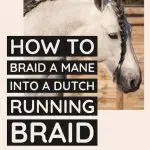In this article we’re talking about braided manes- specifically, running braids and turnout braids. These two informal horse mane braids are perfect for helping grow, protect, and care for long, luxurious manes.
Putting a Running Braid in A Horse’s Mane
A running braid is a fun and sometimes very useful alternative to traditionally braided manes.
Long manes are lovely, but sometimes all that hair can get in the way of the rider’s hands or cause a lot of heat to build up during hot summer rides! While some horse owners turned to mane roaching to keep horses cool and rider’s hands clear, a running braid is a perfect way to keep the mane tidy, cool, and out of the way- without a commitment to shaving the mane. Running braids are a bit like french braids for your horse!
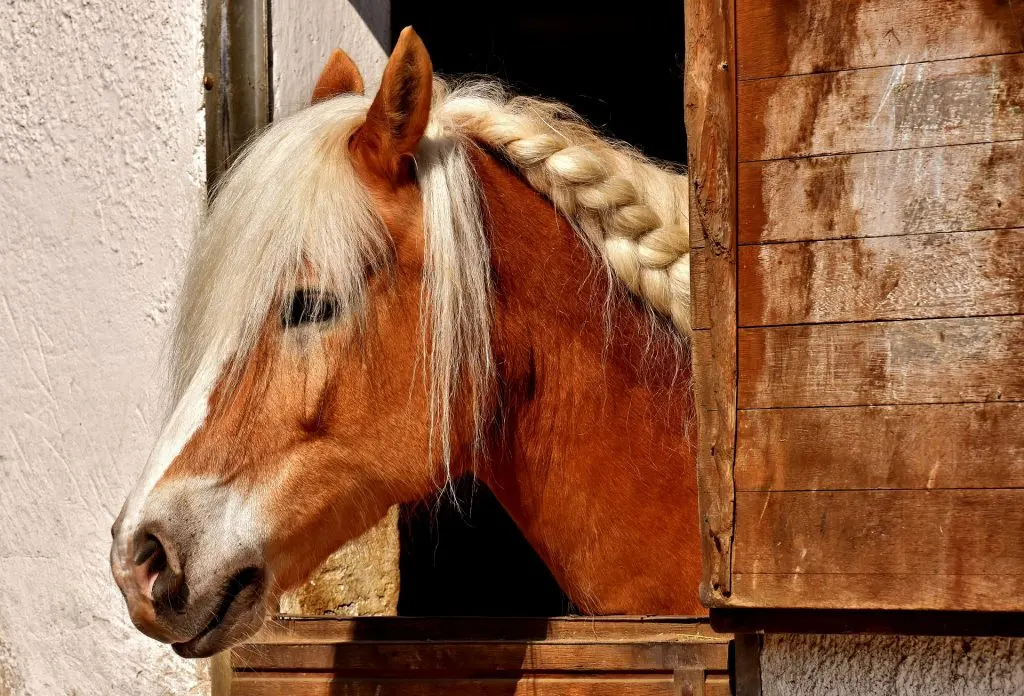
One nice thing about running braids is that they can be done on horses with a long mane without having to trim the mane. For traditional braids, a horse’s mane must be trimmed or pulled to several inches long. But for a running braid, the horse’s mane can be almost any length! The longer the mane, the bigger and better looking a running braid looks.
A running braid is braided into a mane very similarly to how French braid would be done into a girl’s hair- if you can french braid you’ll have no problem picking up the running braid! To make the braid “pop” like the braid below, you’ll be braiding UNDER instead of over with each twist. This takes a bit of time to get used to but creates a beautiful effect- especially with thick textured manes like the horse I’m demonstrating with. If you are working with a thin or fine mane, you can add a little human-grade hairspray or dry shampoo to add texture to make the braid look great for your event.
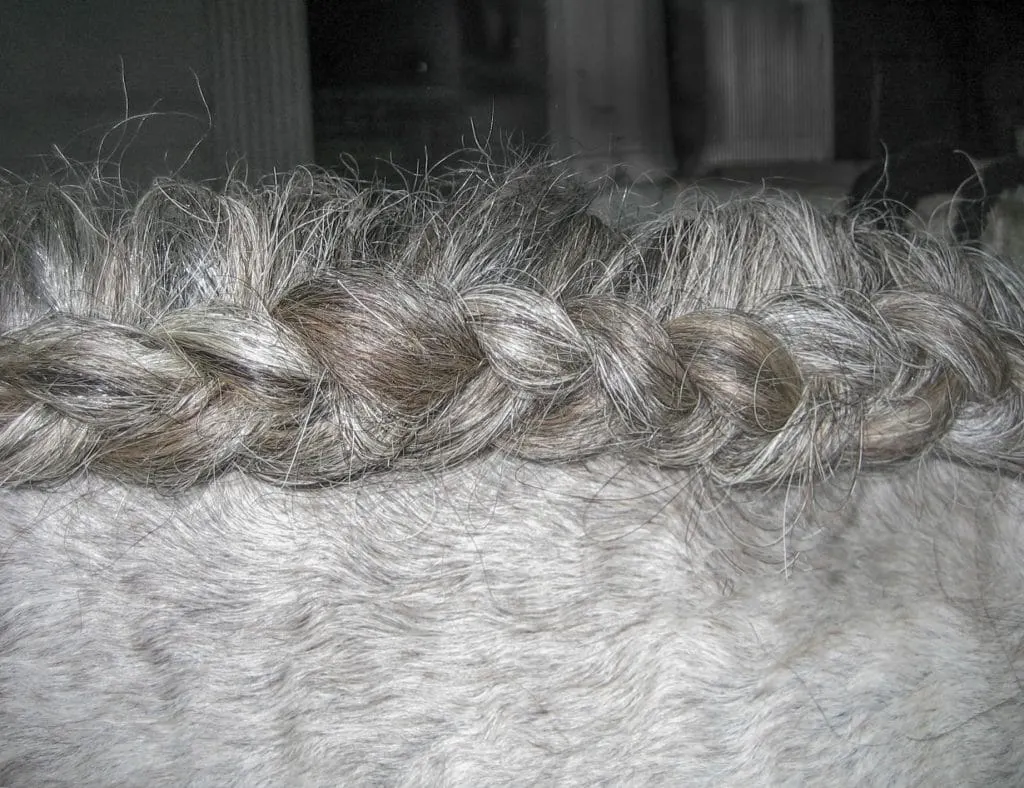
Step by Step Running Braid Instructions
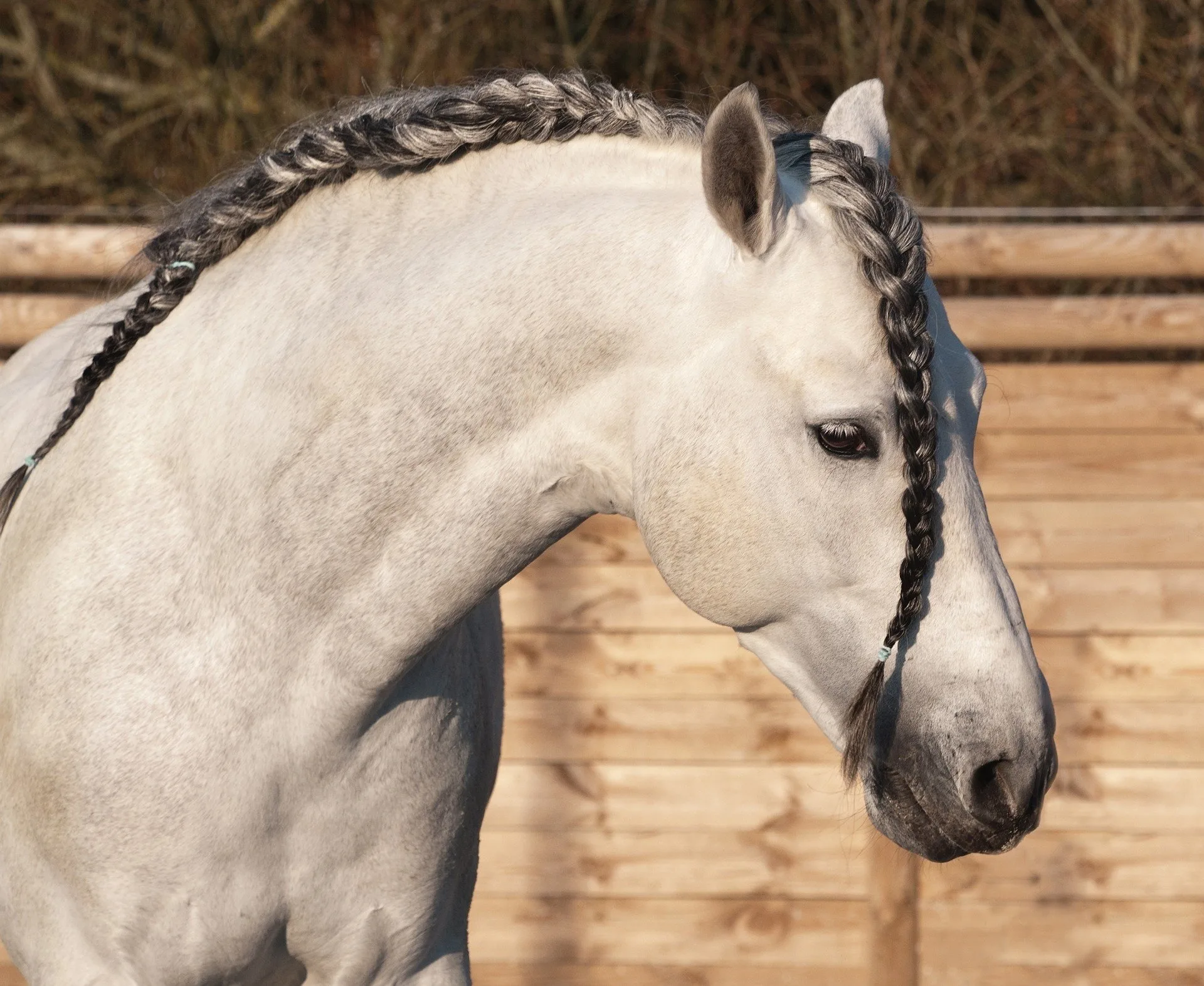
Step by Step Running Braid Instructions
Time required: 10 minutes
Start Behind the Ears
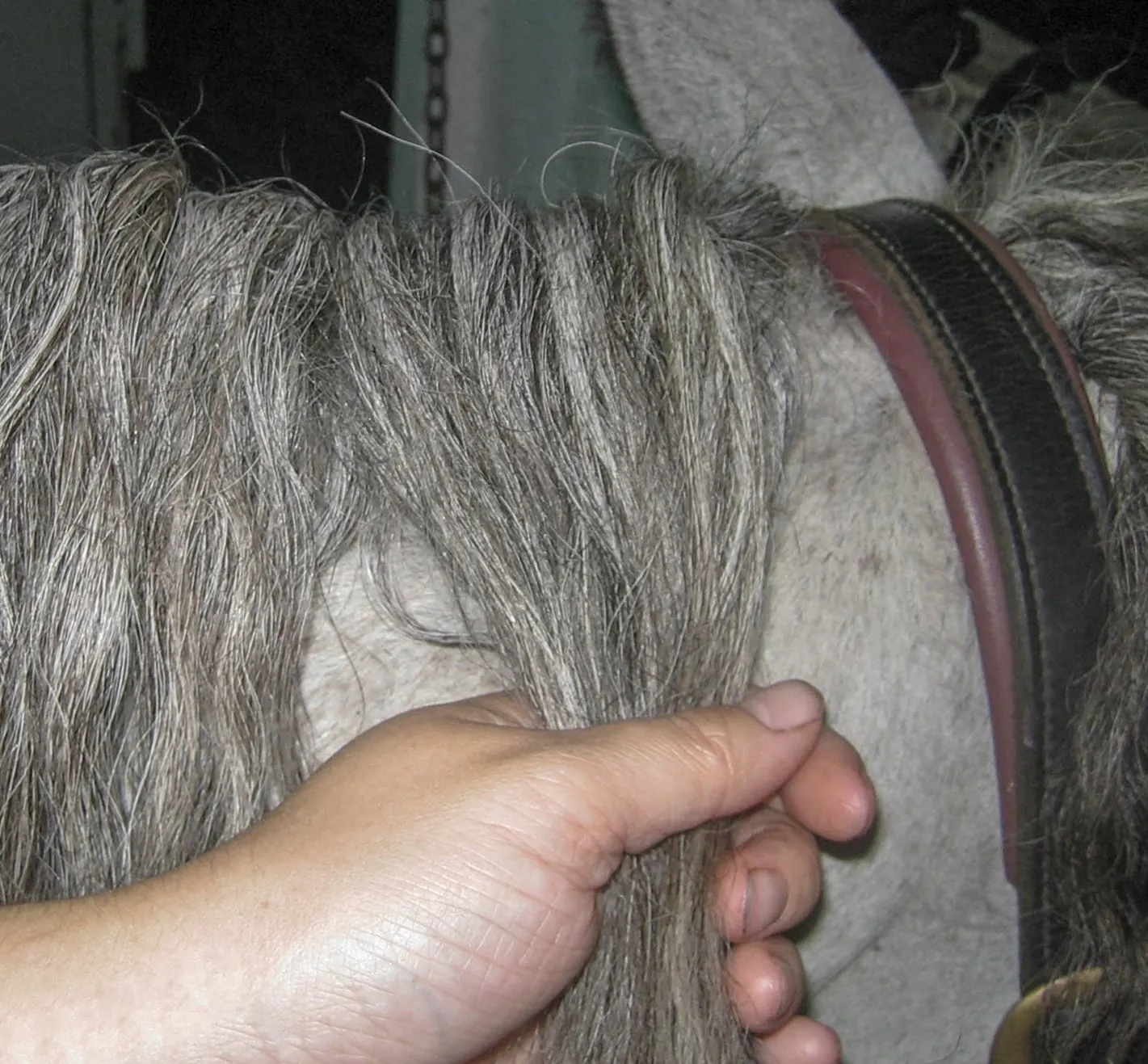
Begin by gathering a big handful of hair at the poll (right behind the ears, at the top of the neck). I do not include the forelock in this braid, although some grooms do.
Divide into 3 Strands
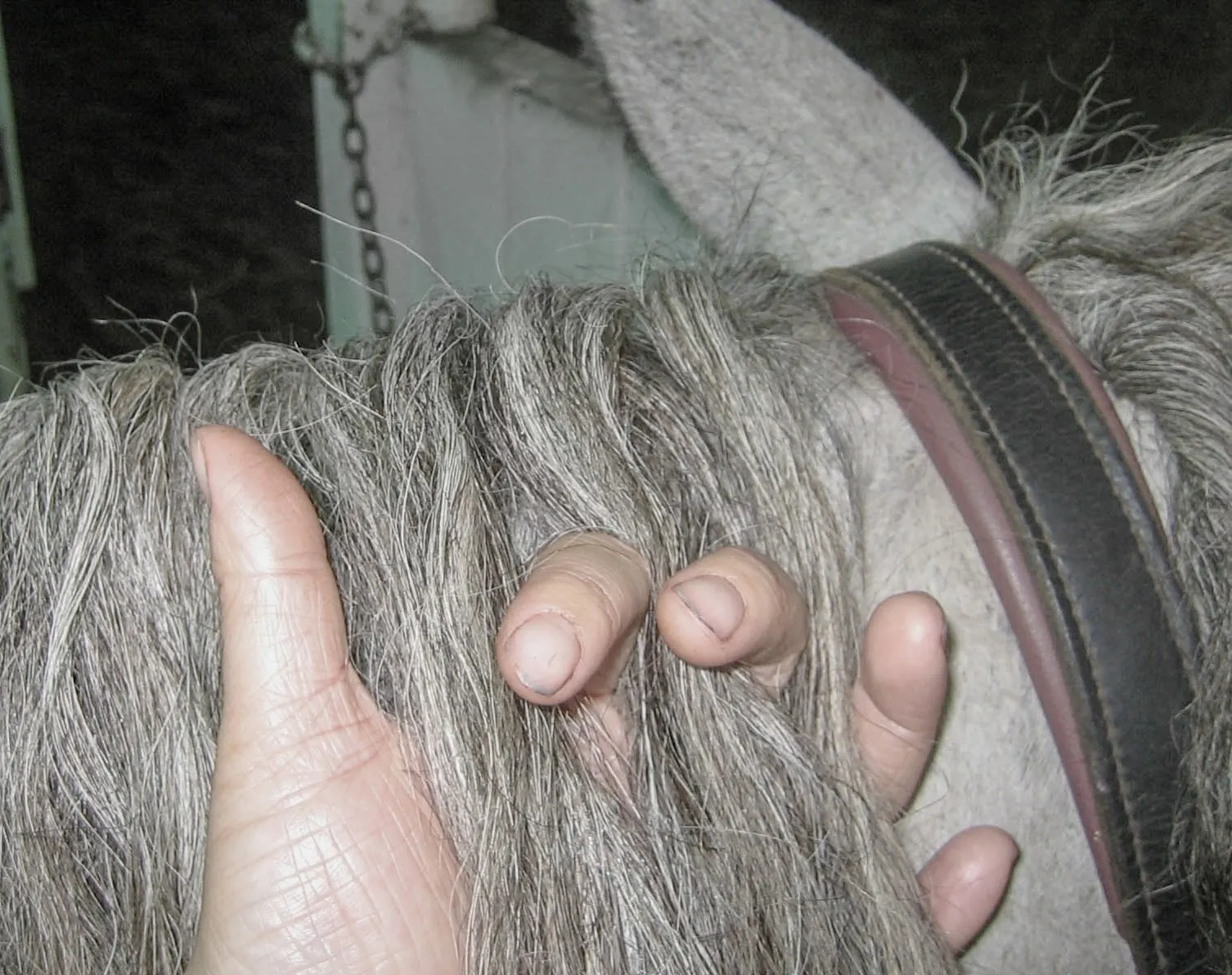
Now Segment that bit of mane into three sections- about 1″ wide each.
For an even more dramatic look, this braid can even be done in a 4 strand braid, which you can learn more about in our article on how to braid a four strand braid.
Braid By Passing Strands Under one Another
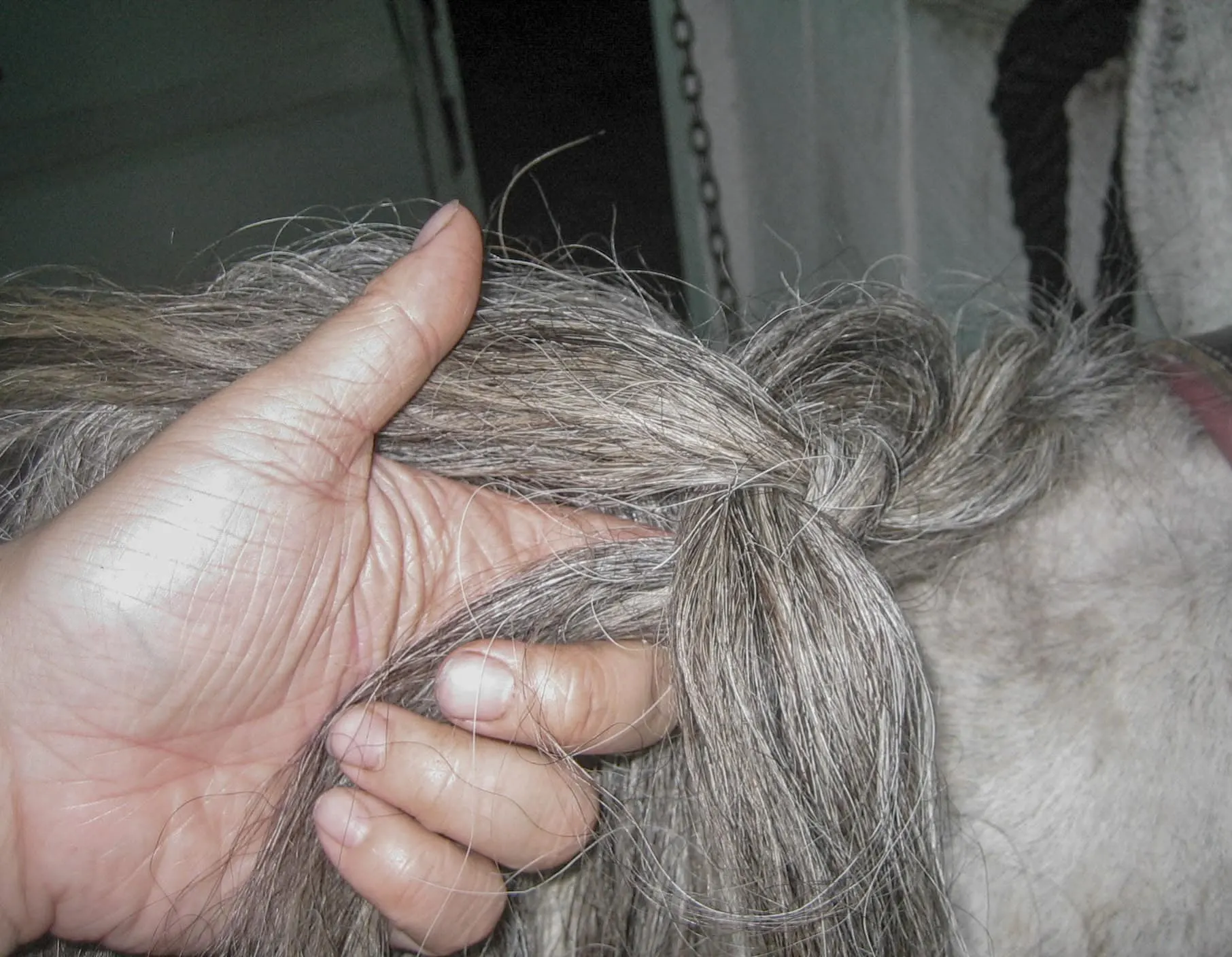
To get the signature “pop out” braid of a running braid, cross each strand under (not over- as a traditional braid is done) each other to form the beginning of a basic three strand braid.
Braid Snugly and Evenly
It’s important to braid snugly, with even tension all the way down. You should braid tight enough that the braid stays tidy but loose enough to allow the neck to flex freely (with practice, it’s easy, but you may need to redo a few braids in the process of learning- thankfully, they’re quick!)
Braid Down the Mane, adding Hair

Once your braid is started it’s time to begin adding hair so the braid will trail down the length of the neck.
Important: Don’t add more hair with every strand of the braid, only add hair each time you plait on the inside- the plait closest to the crest of the mane.
Braid to the Withers
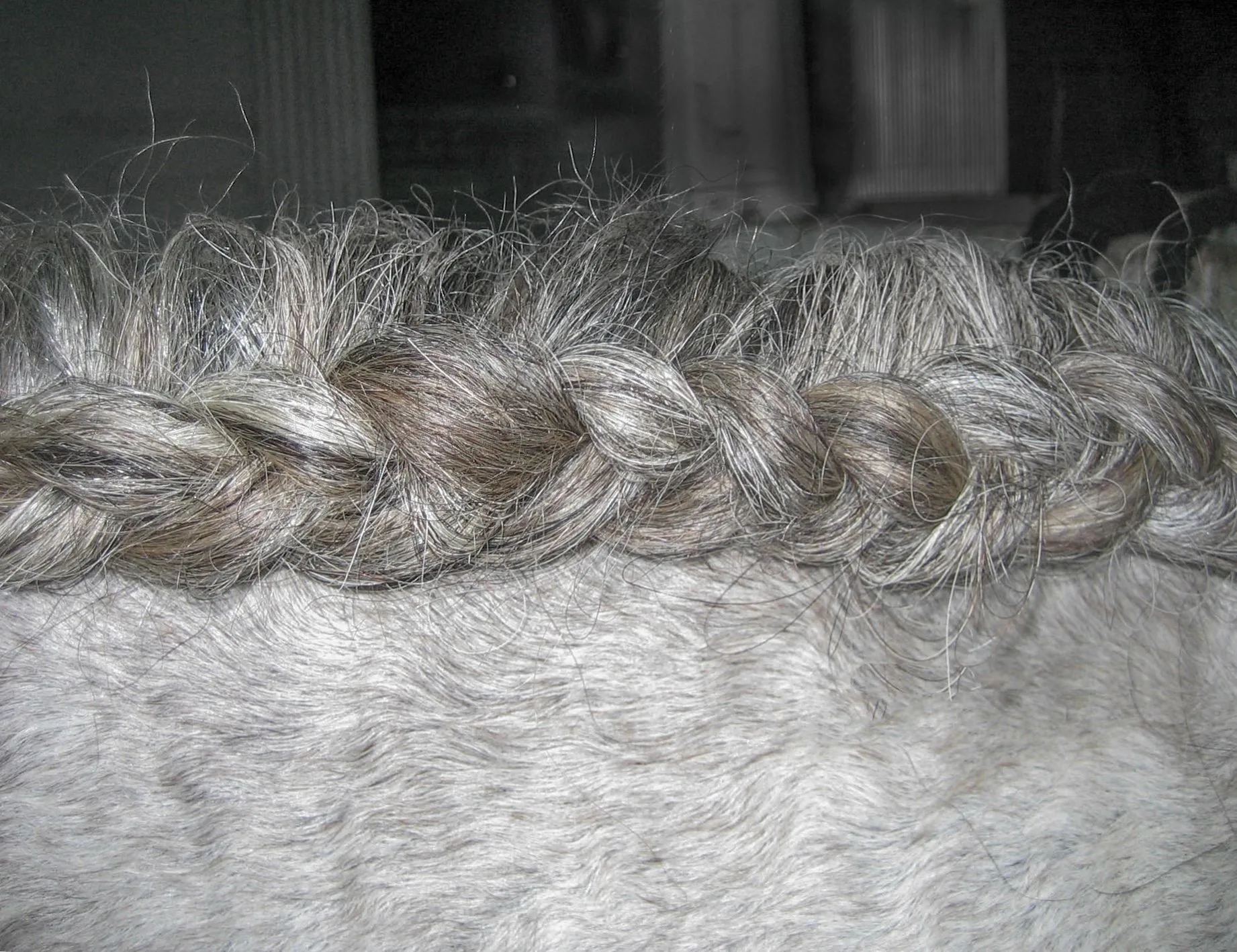
Once you get going, it’s a very quick process to complete a running braid. If your horse has a double mane (a mane that parts down the middle), you can gather both sides for a very full braid on one side or complete a braid down each side of the neck.
Finish Running Braid with a “Bun”
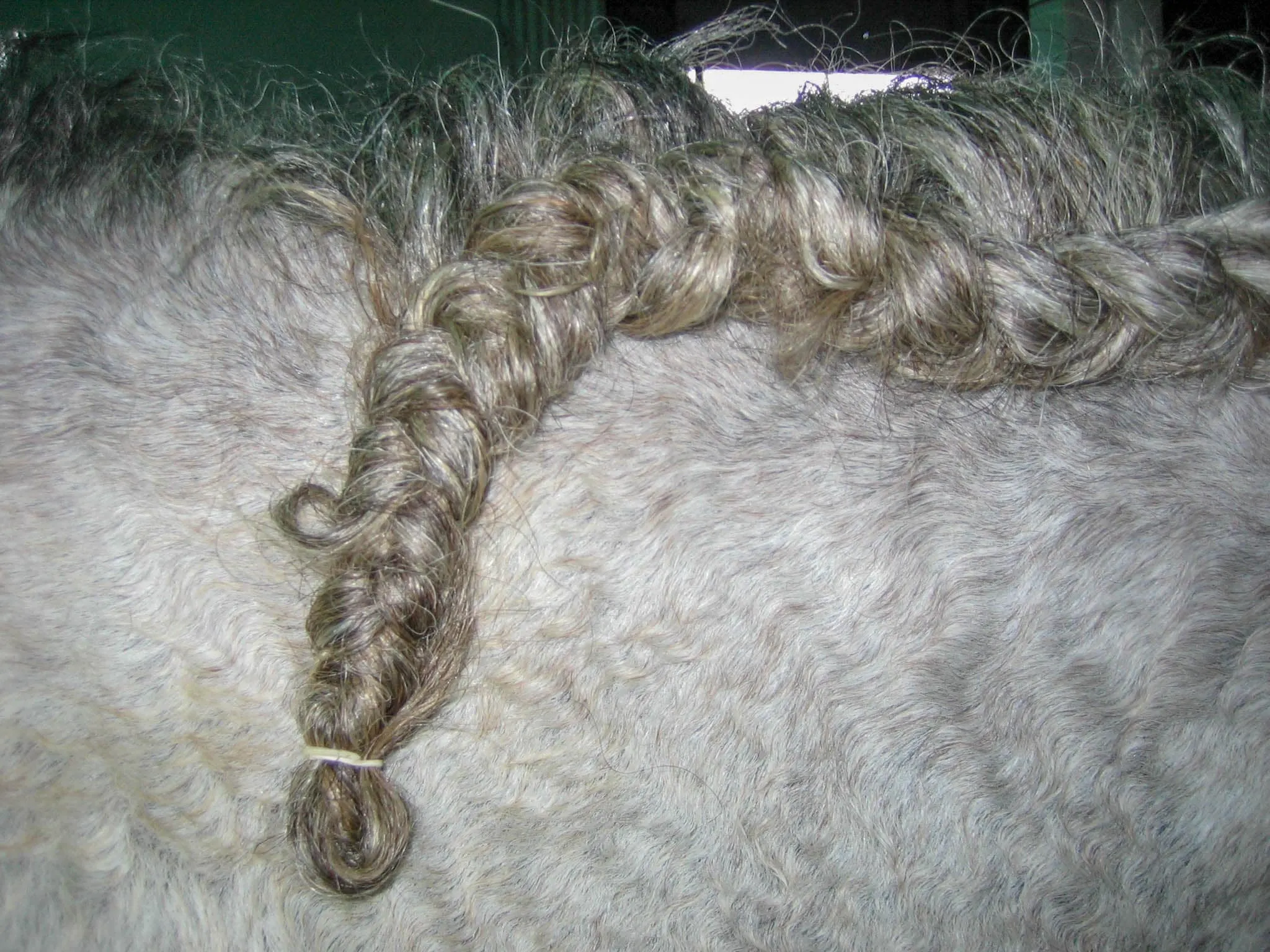
When you reach the base of the neck and run out of mane to add, just finish braiding the length of the hair left in your hand with a traditional braid and add a rubber band. For an even tidier finish, tuck the ends up into a rubber band.
For shows, you may want to use mane-colored yarn and a darning needle to create an extra-tidy finished end.
Supply:
- Hairspray to improve grip during braiding
Tools:
- Wide-tooth comb
- String, rubber band, or ribbon to tie off braid
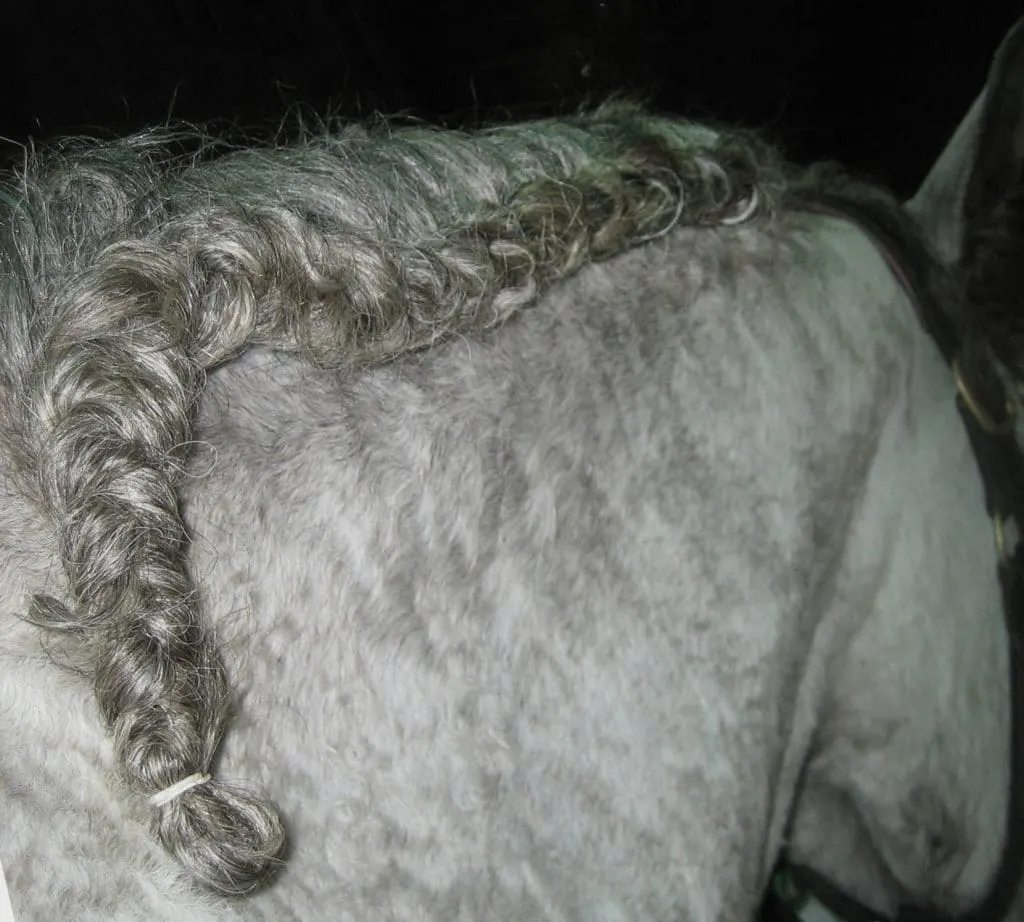
[NOT PICTURED: For an even more dramatic effect, try completing a running braid with a four strand braid ]
The finished effect is dramatic and compliments the neck of many horses. This braid is best for riding, but should be removed for turnout. To keep manes untangled during turnout, check out our article on pasture braids.
When doing a running braid with a very fine or just-barely-long-enough mane, you may want to add a bit of hairspray to add texture and grip to the hairs. Just remember to wash the hairspray out so it doesn’t leave an itchy residue that might make your horse rub his main on a fence or tree.
The running braid is acceptable at almost all horse shows, and is actually preferred for some breeds including Andalusians, Morgans, Arabian horses, and more. Breed standards indicate we not trim or pull our Bashkir Curly‘s manes, so for dressage competition, we use a running braid. The running braid can be done tight against the crest (as this horse’s mane is), or allowed to fall several inches down the neck. Because the longer running braid can “flop” at certain gaits, and trap heat underneath it during intense workouts, we prefer the running braid that follows closely the crest of the neck.
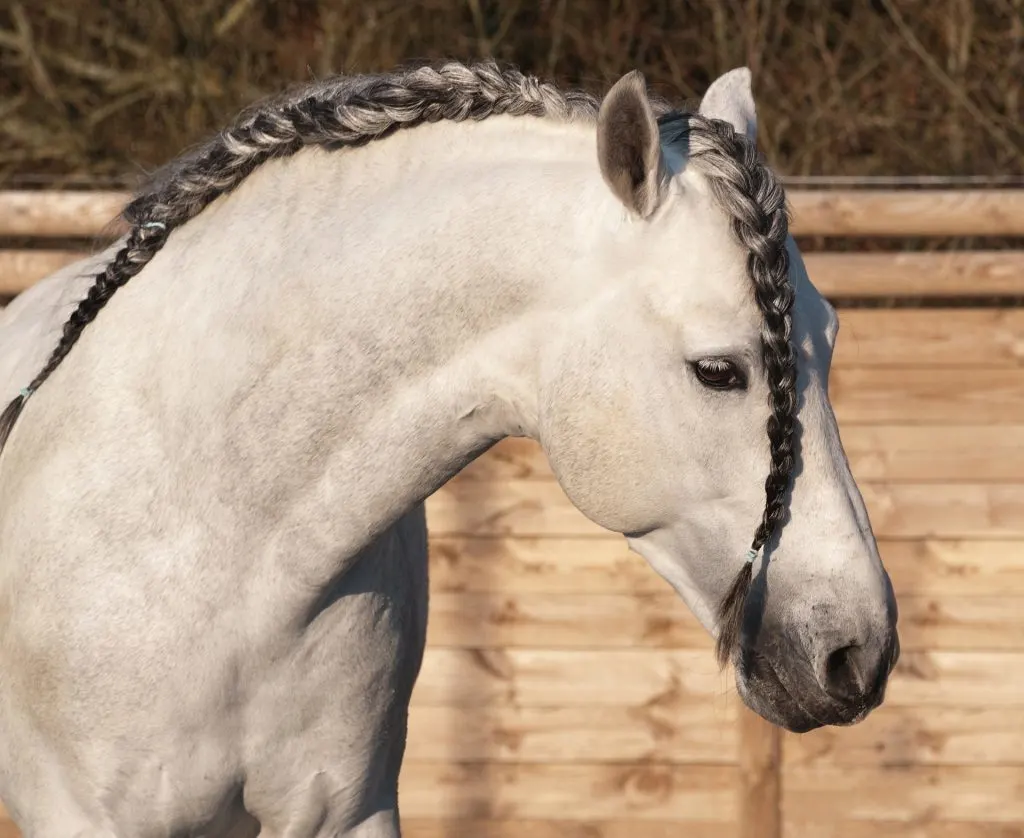
The following section may contain affiliate links. As an Amazon Associate, we earn from qualifying purchases.
Mane Braiding Hints & Hacks
Young or old, most horse owners get a kick out of braiding manes and tails from time to time. Whether you are braiding for show, for fun, or as a way to keep necks cool and long manes tidy, it can be helpful to know a few braiding tricks. At curlyfarm we’ve written on running braids, pasture braids, Dutch braids, and 4-plait braids, but there are dozens more braids to experiment with. One of the best resources we’ve found for eye-turning mane braiding styles is actually instruction books for braiding human hair!
Our favorite resource, “Twist Me Pretty” has step by step instructions for 45 braiding styles, many of which can be transformed into even more dramatic looks by completing the braid with a 4-plait braid instead of a standard 3 strand braid.
Picking up the 4 strand braid can be a challenge at first, but we’ve found this braiding tool– designed to hold four strands, to be the perfect aid to make the learning curve much easier!
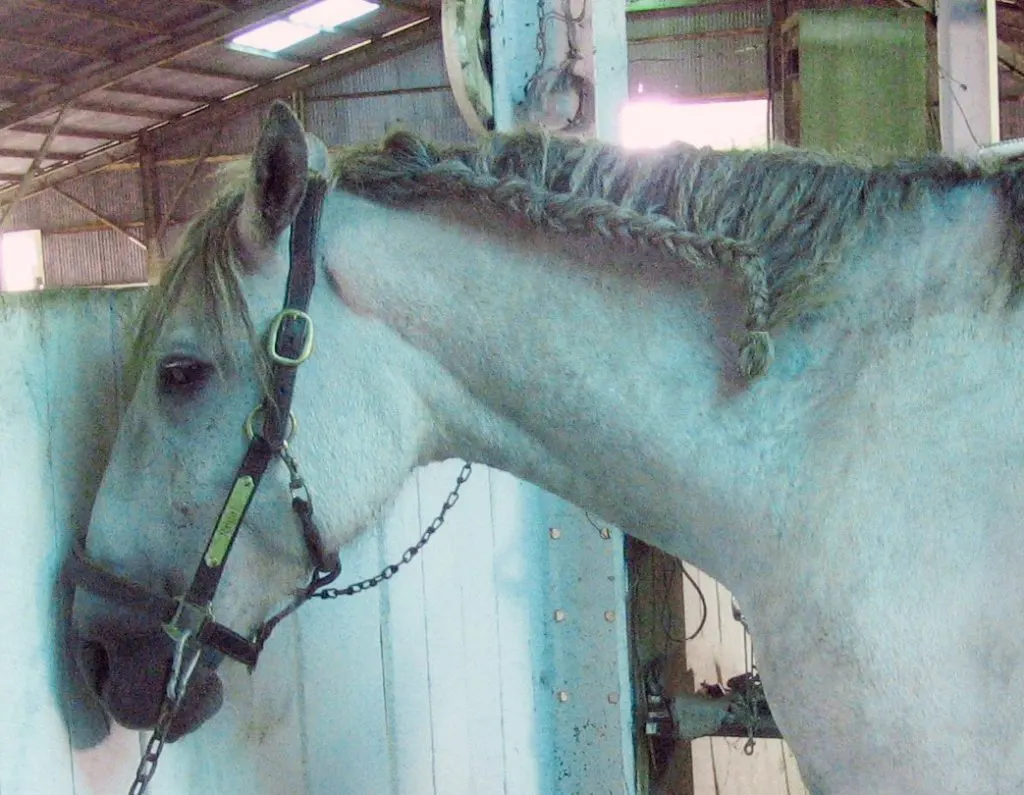
Can you braid a horse’s mane while it is wet?
You can braid a horses hair while it is wet with a few cautions: 1. Just like human hair, when horses manes or tales are braided while wet, they will be curly when unbraided if allowed to dry while braided 2. For horses with very thick manes, braiding a wet mane may hold moisture against the horse’s skin, leading to skin irritation and itching – which can cause a horse to lose hair from scratching.
Why do people braid horses manes?
Because it’s fun, it’s useful, and in some cases, it’s required (like for certain horse riding competitions). Originally, horse’s manes were braided as a safety measure: simple braids kept the thick manes of working horses out of harnesses and equipment. In the military, horses manes were braided for reasons of both function (for example, not impairing a soldier’s ability to reach for a weapon) and form (creating a formal, organized, and impressive-looking army was part of good warfare).
Today, horse braiding is part tradition- because we’ve done it this way for so long- and part fashion. Today more than ever, creative braiding is welcomed in the show ring and still serves the functions of keeping manes free from interfering with reins and harness, helping keep horses cool, and stimulating mane growth.
Can you French braid a horse’s hair?
You can, and you’ve already found the tutorial! What is called a “running braid” in horse circles is actually the equivalent of a human French braid. For step-by-step instructions on braiding of French braid in your horse’s mane, just review the tutorial above.
What are Dutch braids and what’s the difference?
When most of us in North America learn to braid we are taught to cross each plait OVER the other plaits. In the traditionally Dutch version of the basic 3 strand braid, the opposite is true: each strand is passed UNDER the other strands. In a simple braid- such as a human pigtail- this doesn’t make much difference, but in a French style braid (which is essentially what the running braid is) visually it makes a huge impact: Dutch-style braids have a 3-D effect making the braid the “pop” out from the gathered hair, as shown in the photos above.
Can you do a waterfall braid on a horse?
Yes! You definitely can, and once you have mastered a running braid on horse hair it’s easy to do a waterfall braid in your horse’s mane – perfect for shows, parades, or just for fun.
Can you braid a horse’s hair too much?
Many new horse owners love braiding their horse’s hair! It’s a fun way to bond and experience a sort of play with your horse outside of the hard work, competition, and training involved in horse ownership. There’s no hard and fast rule about how much is “too much” to braid a horse’s hair, instead, watch your horse: are they scratching their mane more often than before you braided their hair often? Are they losing significant amounts of hair from scratching or from tension? This may be related to the type and tightness of your braid rather than braiding itself, but it’s something to watch for as a red flag.

